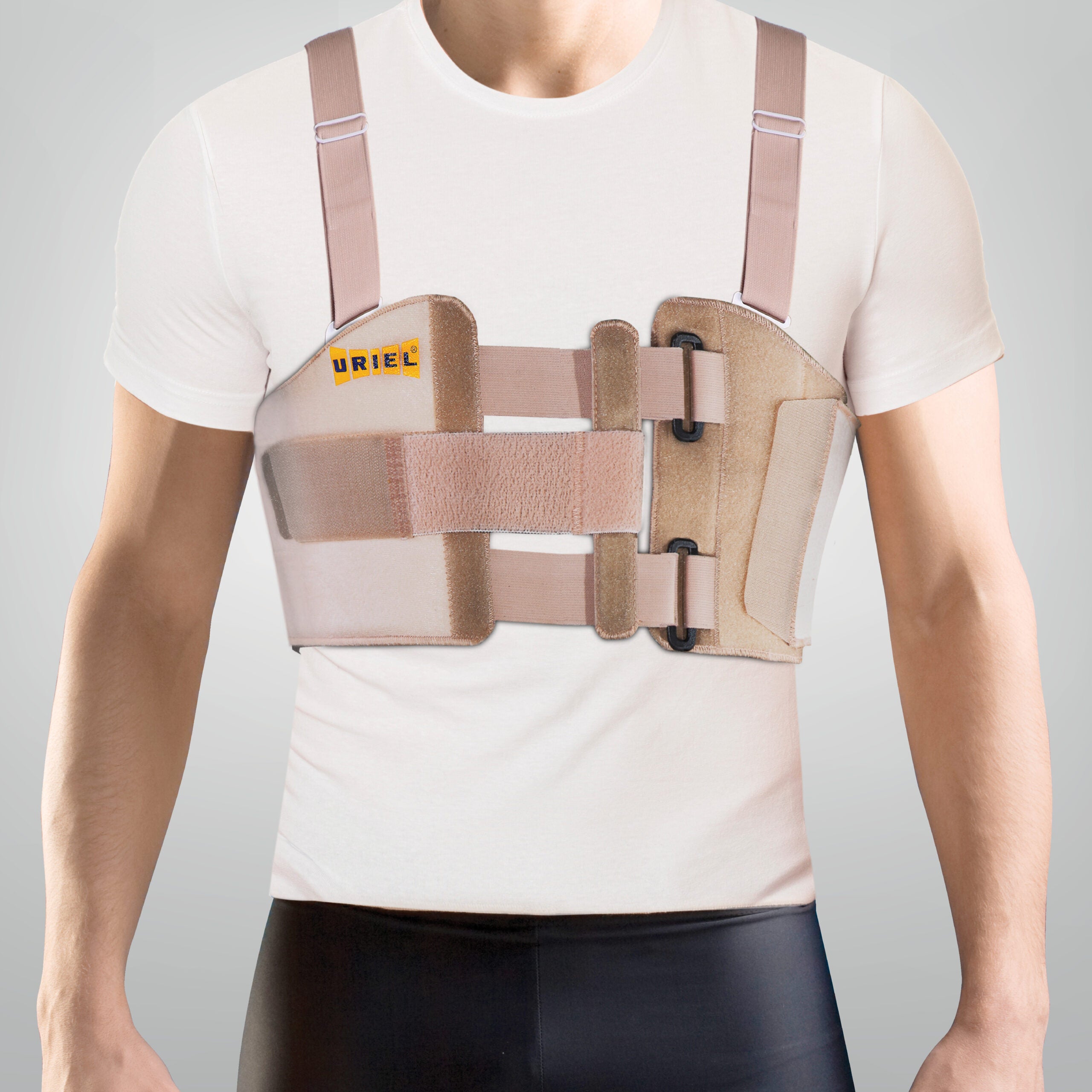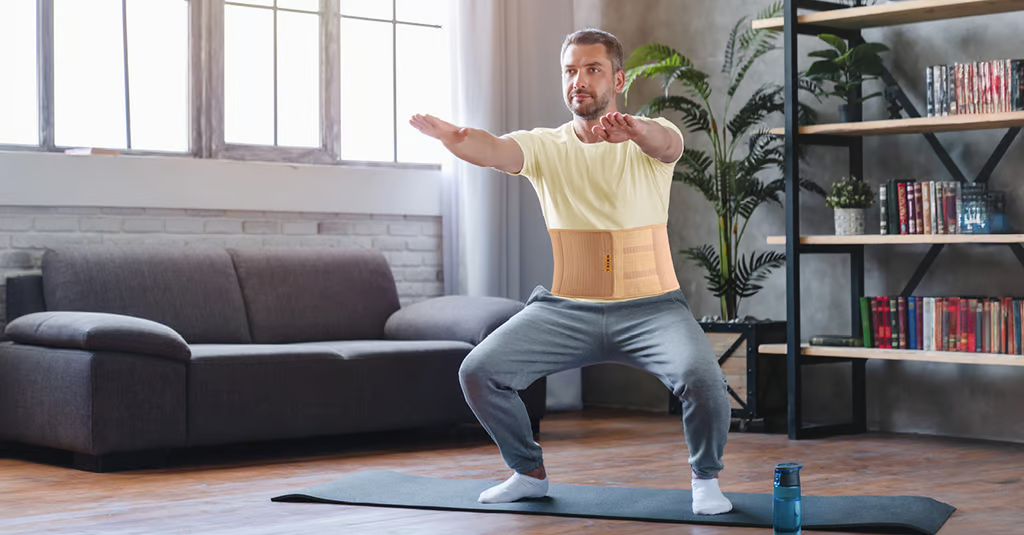
Postoperative chest belt | 14
A unique chest belt for post-surgery and chest fractures, with a special closure for effective and quick tightening and release when coughing.
A unique chest belt designed to support and reduce pain after sternum opening surgery, rib and chest fractures, upper chest injuries, and inflammation of the joints in the thoracic region.
The belt is made of fabric with a sponge and cotton towel for maximum comfort, and features a special front closure that allows for a strong tightening before coughing and a quick release afterwards. A unique hand grip allows for maximum tightening during deep breaths during physical therapy, to help drain secretions from the lungs and minimize unwanted movements.
Medical indications:
- After sternum opening surgery
- Fractures of the ribs and breastbone
- Chest bruises
- Inflammation of the sternoclavicular joint
- Need for soft tissue support and reduction of chest pain
- Assisting with deep breathing and draining secretions from the lungs during physical therapy.

Dimensions

Extended description
User manual
How to wear the chest belt:
- Hold the belt with the mechanism facing forward and make sure the straps are open.
- The Velcro on the back of the strap should be closed, without significant tightening.
- The straps should be passed over the shoulders and back, so that they cross each other at the back in a crisscross pattern.
- Now tighten the wide strap around your chest more tightly.
- Make sure the belt is positioned symmetrically and comfortably on the body, without creating excessive pressure or discomfort.
- A final check should be made to ensure that the belt is tightened correctly and that the buckle can be tightened and loosened easily when necessary.
- The belt is designed for use throughout the day, especially in situations where additional support is needed, such as sudden movements, coughing, or while performing physiotherapy exercises.
- The belt should only be removed in situations where support is not needed, such as during complete rest or while sleeping, unless otherwise instructed by your doctor.
- Pull the strap and tighten the belt using the tightening mechanism.
- Make sure the belt is snug, but not too tight.
- After the cough is finished, the horizontal bar should be released slowly and carefully.
Our expert advice

How to wear the chest belt:
- Hold the belt with the mechanism facing forward and make sure the straps are open.
- The Velcro on the back of the strap should be closed, without significant tightening.
- The straps should be passed over the shoulders and back, so that they cross each other at the back in a crisscross pattern.
- Now tighten the wide strap around your chest more tightly.
- Make sure the belt is positioned symmetrically and comfortably on the body, without creating excessive pressure or discomfort.
- A final check should be made to ensure that the belt is tightened correctly and that the buckle can be tightened and loosened easily when necessary.
- The belt is designed for use throughout the day, especially in situations where additional support is needed, such as sudden movements, coughing, or while performing physiotherapy exercises.
- The belt should only be removed in situations where support is not needed, such as during complete rest or while sleeping, unless otherwise instructed by your doctor.
- Pull the strap and tighten the belt using the tightening mechanism.
- Make sure the belt is snug, but not too tight.
- After the cough is finished, the horizontal bar should be released slowly and carefully.
Blog

Treating Lower Back Pain: 6 Tips to Improve Quality of Life
Suffering from lower back pain? You are definitely not alone. There are many ways to deal with one of the most common pains in the world, here are some of them. It's time to relieve the pain.

The Secret to a Healthy Back: The Complete Guide to Improving Posture and Alleviating Back Pain
Is back health important to you? Get the 'Secret of a Healthy Back' guide containing information, tips and useful advice for relieving back pain. By Oriya Moran, Chief Physiotherapist Download t...

Kinesio tape or professional elastic bandage?
Suffering from sports injuries, bruises or simply pain caused by medical problems? Get to know the variety of dressing products that will support you. When should we use kinesiology tape and why d...
